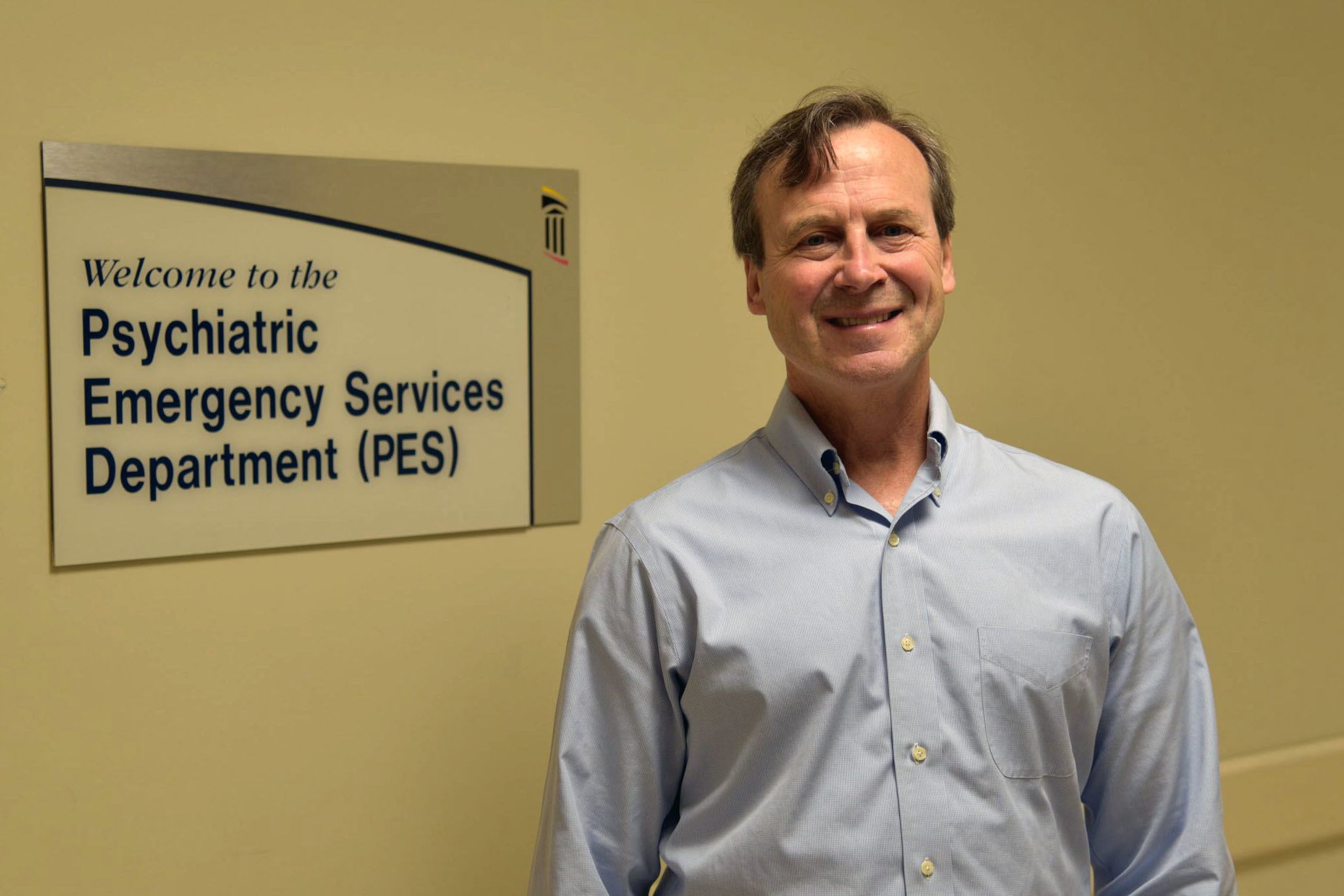Last year, the opioid addiction epidemic led to 2,089 overdose deaths in Maryland, compelling Gov. Larry Hogan to declare a state of emergency and commit an additional $50 million over the next five years to enhance enforcement, prevention and treatment services.
Last year’s 66 percent jump from 2015 is the state’s largest recorded annual increase. The greatest number of deaths were due to illegal opioids heroin and fentanyl.
For the first time, the University of Maryland, Baltimore, and the University of Maryland Medical System are offering a free community event, “Not All Wounds Are Visible: A Community Conversation About Mental Health and Substance Abuse.”
The seminar takes place Tuesday, June 27, from 9 a.m. to 5 p.m. at the University of Maryland, Baltimore, SMC Campus Center, 621 Lombard St.
Dr. Eric Weintraub, associate professor at the University of Maryland School of Medicine and a board certified addiction psychiatrist at the University of Maryland Medical Center, will be a featured speaker. Jmore recently talked with Dr. Weintraub about treating addictions.
What substances are being most heavily abused in the U.S. and in Baltimore?
Dr. Weintraub: For many years, Baltimore has had among the nation’s highest per capita uses of heroin, plus cocaine and alcohol abuse. But starting in the late ‘90s, there was a push by certain parts of the medical community to more aggressively treat the pain of non-progressive cancer by using opioids. At the same time, longer-acting opioids were produced by Big Pharma, and they aggressively marketed these medications, such as Oxycodone. Doctors across the nation started prescribing them so much so that by 2012, 259 million prescriptions were written for opioids.
As the rate of opioid prescriptions has increased, so has the rate of overdoses and deaths. In 2015, 91 Americans died every day from opioid abuse. Approximately 80 percent of all opioids in use worldwide are prescribed in the United States, which has 5 percent of the global population. In Europe, they don’t treat pain the same way, so this is an American and Canadian problem.
This usage impacts rural areas as well as inner cities and now also affects a younger, Caucasian population. Some 80-90 percent of heroin users start with prescription opioids and switch to heroin, which is easier to get or cheaper.
My practice used to be focused on the inner city, but now we treat all segments of society. In fact, because of the spread of heroin and opioid addiction, we’ve set up clinical agreements to provide services through telemedicine for counties that are new to working with rural populations that abuse substances.
What are the consequences of this crisis?
It’s devastating. Opioid addiction impacts families of all economic classes, and it costs the nation billions of dollars each year in medical costs and the loss of productivity. More women are using opioids than ever before. Opioids are an equal opportunity addiction.
For example, Fentaynl is being manufactured illegally and mixed with heroin, and now more young people are getting involved, resulting in more overdose deaths. Fentaynl is 100 times more potent than heroin. And Carfentanil is 10,000 times more potent than heroin. Carfentanil is so deadly that when law enforcement personnel enter a crime scene and see white powder, they must not touch it because it is absorbed by the skin.
Opioid addiction is a medical illness that impacts the brain, affecting mental health in several ways, including mood, anxiety and psychosis, and it can exacerbate pre-existing issues such as depression. Patients can become desperate, suicidal. Depending on whether or not there is a pre-existing condition, sometimes the abuse can clear up in a matter of days, other times it is more difficult. Addictions are usually treated with medications, but in other cases the patient needs medication-assisted treatment, which includes therapies.
How can non-medical people identify if someone is suffering from substance abuse and mental health problems?
Family members will see significant changes in behavior. The person is missing work, there are changes in school performance, he or she is interacting with you differently or not at all, friends and interests in activities change.
The best reaction of parent or other family members is to contact a professional. Don’t keep it to yourself. The Behavioral Health System Baltimore is a free information and referral service at 410-433-5175. The Baltimore Department of Health and Mental Hygiene, 410-767-6500, is another good source of information. So are the Drug and Alcohol Abuse Programs of the University of Maryland Medical Center at 443-462-3400.
What more can be done?
This epidemic is impacting everyone in society, and it’s projected to get much worse. We’re all paying for it, one way or another. Begin at home by being involved with your kids. Start prevention early on. We need to educate parents on what to tell kids and what to look for. Schools must do a better job of educating students about substance abuse.
We need to improve our programs for prevention, treatment and recovery. For example, the CDC and regulatory bodies are now offering improved guidelines on the prescription of opioids for pain. We need more prevention programs. We also need more money for treatment and, as part of the recovery process, we need to help people work on their physical and mental health. We also must aid them in getting jobs so they can earn a living, and help them find a safe place to live.
We also need to train more police officers and family members to reverse substance abuse overdoses with Narcan, a prescription medicine. Similar to an antidote, Narcan reverses the effects of opioids, and it is easy to administer.
Who do you hope attends “Not All Wounds Are Visible”?
Parents, family members, friends of individuals living with mental health or substance abuse issues, as well as caregivers, teachers, faith leaders and public safety officials should attend. We need an all-hands-on-deck type of intervention, from the top down and from the bottom up.
For information about the seminar, call 800-492-5538 or visit umms.org/communityhealth.
Peter Arnold is an Olney, Md.-based freelance writer.
Photo of Dr. Eric Weintraub courtesy of the University of Maryland Medical Center





